Climbing roses are a luxurious addition to any garden, providing both height and beauty. To grow climbing roses, it is necessary to have a structure such as a wall, trellis, tree, or pergola for them to climb upon. The variety of climbing roses available is astounding, with variations in size, form, fragrance, color, and hardiness. It’s exciting to note that every shape of rose flower can be found in climbing roses – from 5-petalled flat rose blossoms to pompom and quartered blooms with dozens of layered petals. Climbing roses range in height from 3 to 20 feet tall, making them perfect for cottage-themed gardens, rose gardens, or as a standalone feature in any style of garden. It’s important to note that climbing roses do not have self-clinging plant parts, so a structure is necessary for their growth, although some types of climbing roses have thorns that help to some extent. You may train and secure the climbing roses to structures to keep them growing where you want them. Climbing roses are available for almost every region, with some types being hardy even in USDA zone 2. With their spectacular features, climbing roses can elevate your garden to new heights.

The Honeymoon Arborose Climbing Rose, also known as Rosa ‘Arborose Honeymoon,’ is a beautiful and popular plant.
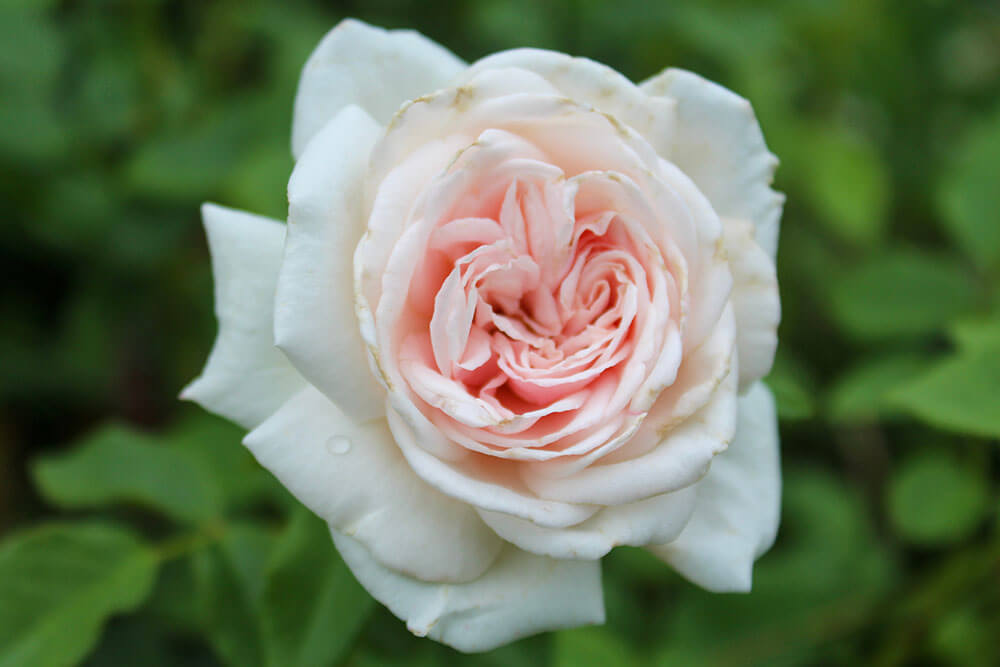
The stunning Honeymoon Arborose Climbing Rose is a perfect choice for those who want to enjoy the delicate fragrance of fresh roses all summer long. These repeat blooming roses bear large clusters of cup-shaped, cream-white flowers with a blush center and over 50 petals per flower. The plant is easy to maintain and has exceptional disease resistance, with thick glossy dark green foliage growing on healthy supple canes. As a vigorous grower, the Honeymoon Arborose Climbing Rose will get bigger and better with each passing year, and may even surprise you with blooms in its first year. This climbing rose is hardy in USDA zones 5 to 9 and grows up to 7 feet tall and 4 feet wide. For a similarly beautiful option, consider the Laguna Arborose Climbing Rose (Rosa ‘Arborose Laguna’).

The Laguna Arborose Climbing Rose, with its striking deep pink and abundant quartered blossoms in clusters of 6 to 8, will bloom repeatedly from late spring to late fall. The scent is a beautiful mix of old-world rose and lemongrass, making it an absolutely delightful addition to any garden. Originating from Germany’s Kordes, the Laguna Arborose Climbing Rose boasts exceptional disease resistance and has received several awards, including the Baden-Baden Silver Medal in 2007 and the Geneva Silver Medal in 2007. This medium-height climber can grow up to 8 to 10 feet tall, making it ideal for adorning arbors or fences. With its soft canes and brilliant dark green foliage, this rose thrives in USDA hardiness zones 5 to 9.
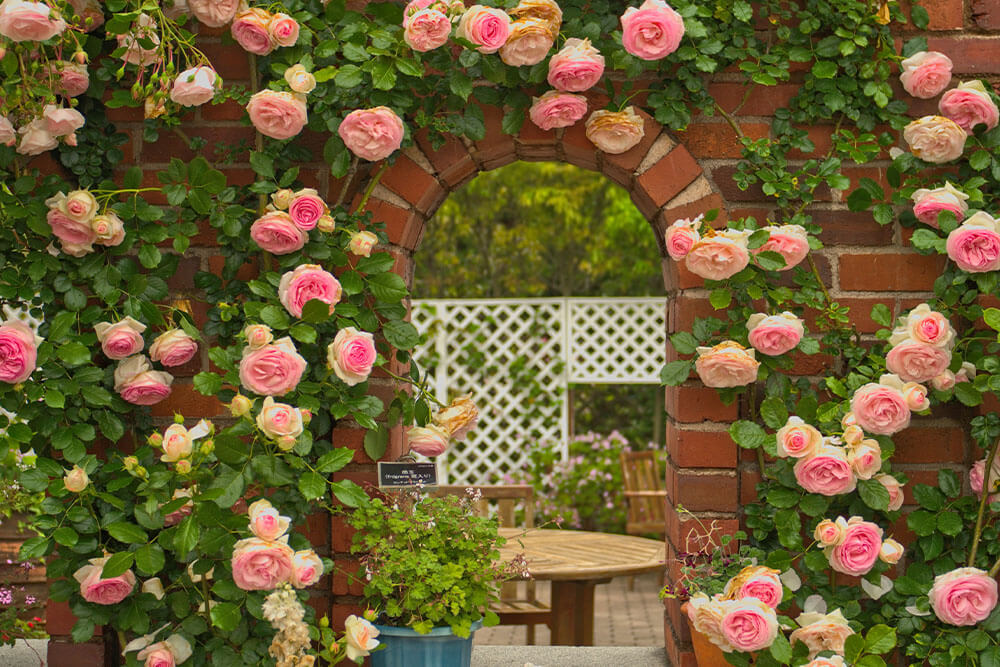
The Eden Climbing Rose, also known as the Pierre-de-Ronsard rose, is a popular choice for gardeners worldwide and is considered the best-selling climbing rose. Bred in France by the House of Meilland, it has earned a spot in the world rose hall of fame. This sturdy climbing rose boasts large, double, cupped blooms with 60-100 petals in captivating shades of pastel pinks, creams, and yellows. Its lightly scented, 4 ½ inch blooms appear in early spring and continue to bloom repeatedly until autumn. With dense glossy green leaves, this disease-resistant rose reaches a height of 8-10 feet and thrives in USDA zones 5 to 10. Eden Climbing Rose makes a stunning feature on a pillar or obelisk, as well as a beautiful addition to fences, trellises, and gazebos.
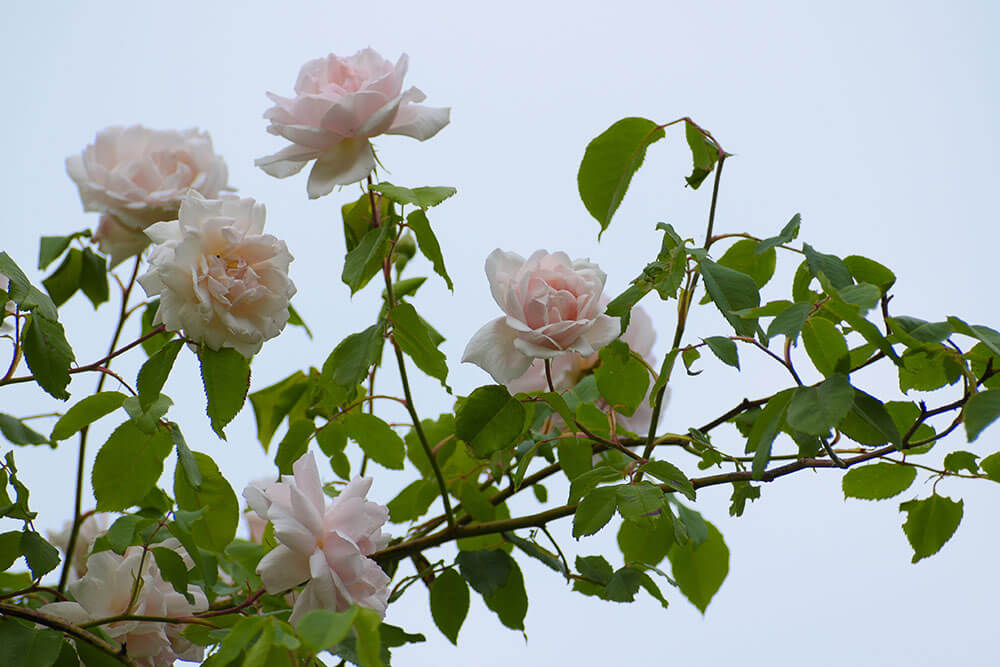
Attributed to Maren Winter, the Climbing Rose known as Madame Alfred Carriére has an attractive fragrance with a fruity scent. This flower is a regular bloomer and has been a garden delight since 1879. With its soft pearl-pink color and up to 40 petals per bloom, it’s no wonder this rose has become a favorite among gardeners. The Noisette type of rose has canes that are practically thornless and can tolerate some shade and drought. Its sturdy growth creates an elegant, bushy effect with impressive foliage. This fast-growing heirloom rose can cover walls, fences, or other garden structures, reaching up to 10 feet in height and 8 feet in width. However, under ideal conditions, it could reach up to 25 feet tall. It’s worth noting that Madame Alfred Carriére is not very tolerant of cold temperatures and performs best in hardiness zones 6 to 11.
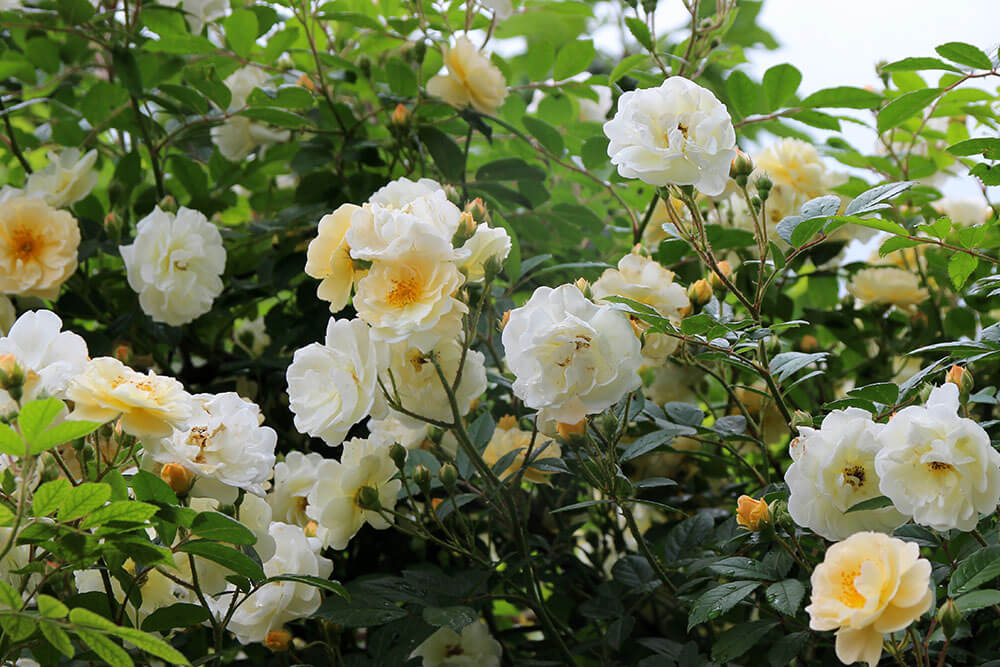
Ghislaine de Féligonde Climbing Rose is a charming climber that boasts orange blossoms that bloom repeatedly. This rose exhibits a dynamic elegance as the buds transform from pale apricot to peach, then pink and finally translucent blushing white. The frilly petals are accompanied by a sweet musky aroma that fills the air. This rambler can be trained on upright supports, pruned into a tall shrub, or allowed to spread its branches out to reach its maximum length of 12 feet. Although the blooms are small in size, they are plentiful and grow on almost thornless, moderately slow-growing branches that can withstand USDA zone 5 to 10 conditions. Another excellent climbing rose variety is the Dorothy Perkins Rose (Rosa “Dorothy Perkins”).

Jennifer is credited for the beautiful image of Dorothy Perkins Rambling Rose, which is known for its abundance of large sprays of small, double matte pink flowers. This rose blooms all at once, producing numerous clusters of powder-puff pink blossoms in early summer. Introduced in 1861, Dorothy Perkins was once one of the most popular ramblers due to its ability to climb 15-18 feet and grow on large arches, walls, or fences, and even be shaped into a tree form. Additionally, the clustered double flowers have a subtle rose scent and are hardy in USDA zones 5 to 10. However, this gorgeous rose is prone to mildew. Fortunately, a newer version, Super Dorothy, developed in 1986, has more disease resistance and repeat blooms from late spring through fall. Another stunning climber, Paul’s Scarlet Climber, is also worth mentioning.
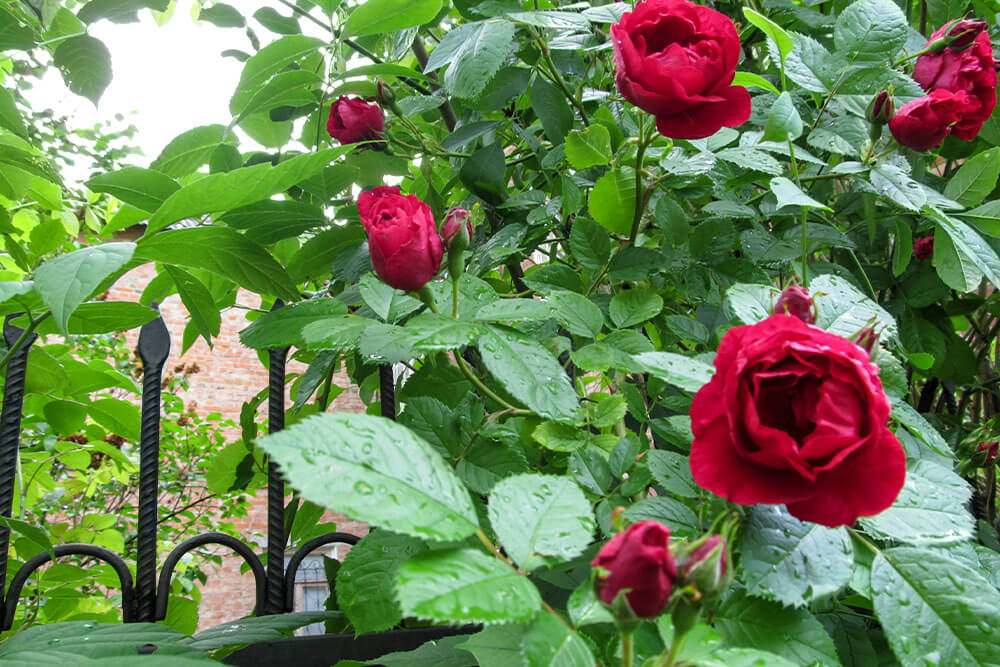
Have you ever seen a flawlessly cupped red rose? How about an abundance of them on flexible climbing stems? The Paul’s Scarlet Climber, a charmingly fragrant and medium-sized bloomed rose from 1876, looks like it came straight out of a fairytale. It’s perfect for enhancing a wall or fence, or even as a decorative archway over a doorway. This rose grows up to 15 feet in size with lush, glossy green foliage and semi-double flowers clustered together. However, if powdery mildew is an issue, it may not be the best choice as it is susceptible. But fear not, as this rose is still hardy in USDA zones 6 to 9 and is a vigorous grower.

The impressive Climbing Rose “Amadeus” is a recipient of the gold medal award, boasting stunning and sizable dark red blooms that grow in groups of 5 to 7. This rose also offers superb disease resistance and can thrive in USDA zones 5 to 9. Despite being relatively smaller, reaching a maximum height of 8 feet and width of 3 feet, Climbing Rose “Amadeus” is perfect for growing on fences and creating a privacy screen. For those seeking a healthy rose that is less susceptible to black spot or powdery mildew problems, Climbing Rose “Amadeus” is an excellent choice due to its dark green glossy foliage. Image credit goes to © Dyba Images.
Another fantastic climbing rose is the Lady Banks Rose (Rosa banksiae).
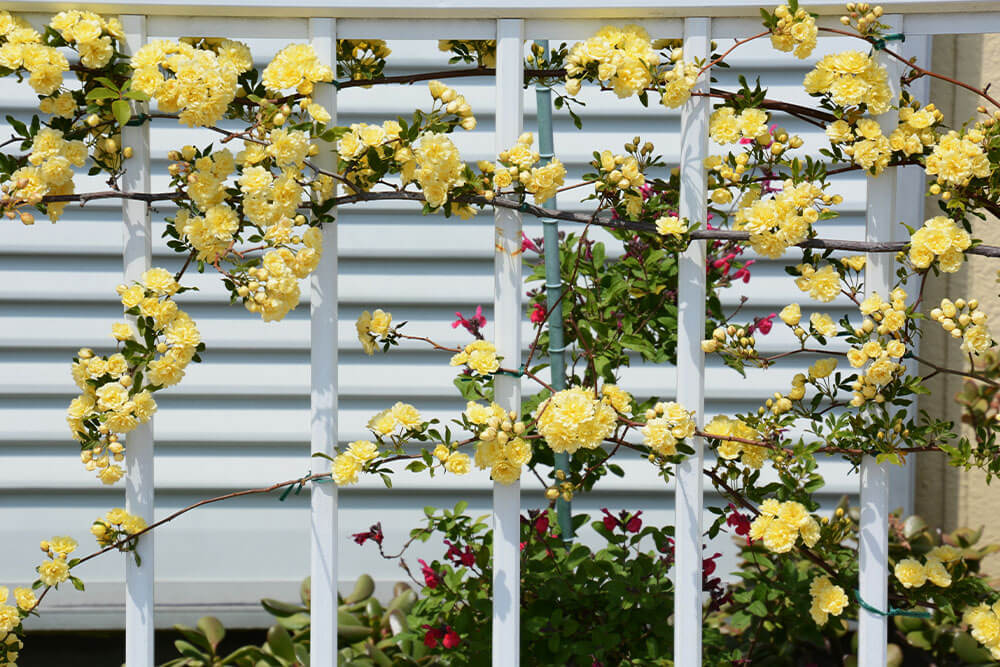
Lady Banks Rose is a magnificent type of rose that can grow up to 20 feet tall. It is perfect for training on any sturdy support and is almost thornless. This climbing rose is an antique variety from 1824 and has been awarded the Award of Garden Merit by the Royal Horticultural Society because of its beautiful display of hundreds of miniature yellow flowers in the spring. Unlike other roses that bloom continuously throughout the season, Lady Banks Rose blooms once with all the flowers appearing together, making it a breathtaking sight to behold. This plant is also a rapid grower, drought resistant, and will thrive in USDA hardiness zones 6 to 9.
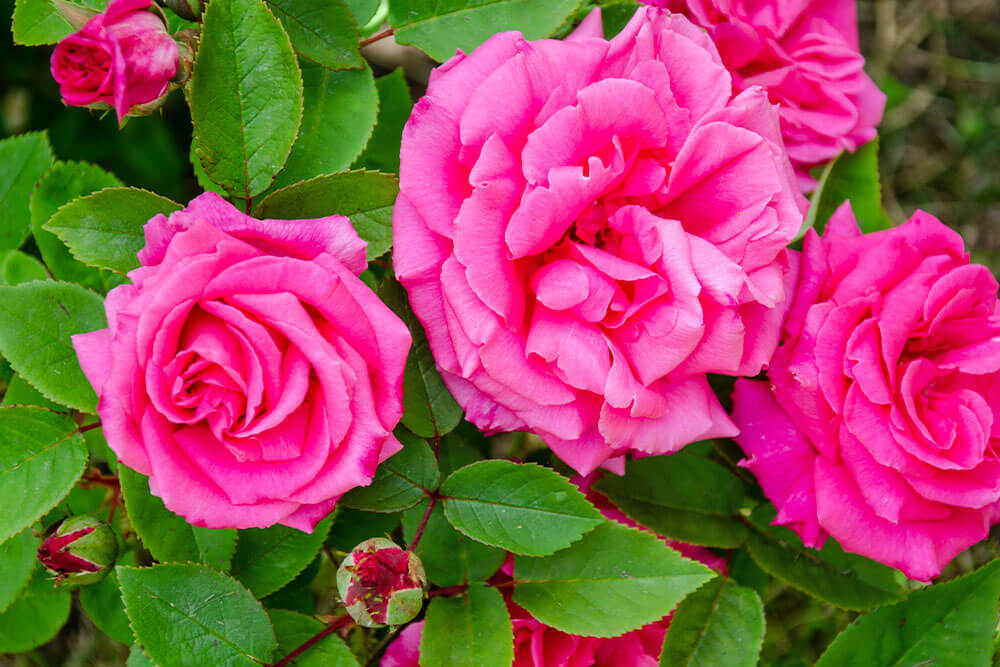
The Climbing Rose “Zepherine Drohin” is a beloved rose due to its consistent blooming and sweet scent. Its beautiful deep pink flowers are 4 inches in size and bloom throughout the season. This rose was introduced back in 1868 and has remained popular ever since. Once established, its thornless canes can grow up to 15 feet. This bourbon rose thrives in warmer climates within USDA zones 6 to 10. Although slightly more susceptible to diseases, it can tolerate most types of soil and grows well in full sun to part shade. If you’re looking for other types of climbing roses to add to your garden, there are plenty of options available in various sizes, forms, colors, and fragrances. Just remember that climbing roses need a structure to grow on, such as a wall, trellis, tree, or pergola. With heights ranging from 3 to 20 feet tall, climbing roses can bring a whimsical touch to any garden style.

